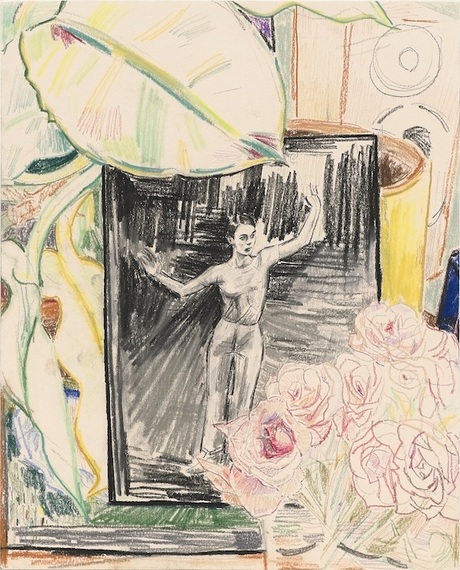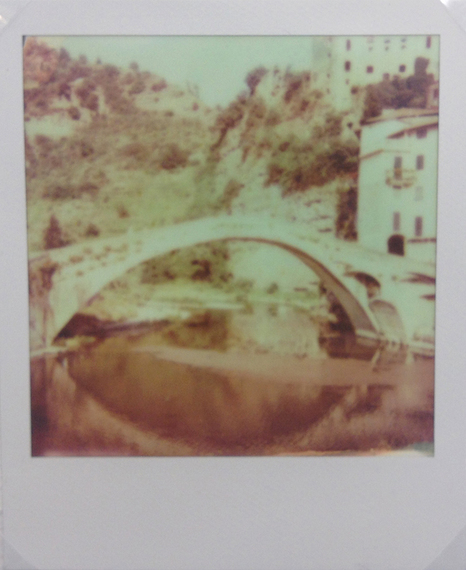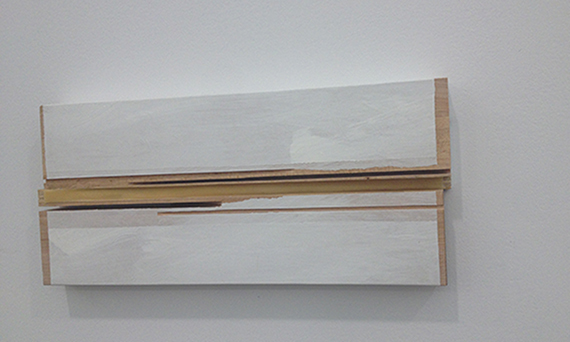
Elizabeth Peyton, Lazy Plant, Yvonne Rainer + Roses 2012, Colored pencil, pastel and pencil on paper, 13 3/4 x 11 inches (34.9 x 27.9 cm) Copyright Elizabeth Peyton
Elizabeth Peyton
In her twenties, Elizabeth Peyton had a show in a small room at the Chelsea Hotel. After asking for the key, visitors let themselves in to find walls adorned with charcoal and ink drawings of Marie Antoinette, Queen Elizabeth II, Napoleon and Mad King Ludwig. When asked, "Do you really like these people?" she answered, "I love them."
She is interested in the moment destiny starts to clarify. Her portraits of Prince Harry follow Princess Diana's death, when he was forced to transform, in Peyton's words, into "a little man." She wants to capture "that particular moment when they're about to become what they'll become," she says. "I like looking at people when they're finding their way, living up to themselves."
Peyton is often compared to David Hockney, whom she has painted, and Nadar, who made portraits of his artistic circles, but she also cites the influence of François Truffaut. She was moved by his instant love for Catherine Deneuve - writing lines for Jean-Paul Belmondo to say to her, expressing his devotion on film. A similar alchemy transforms Peyton's own adoration into art.
She says she "makes pictures as a way to hold on to someone." The epigraph to one of her books is a Shakespearean sonnet, which she paraphrases as "all the wars in the world can happen, everything can change, but I'm going to make art inspired by you, and you'll live forever."
Her tender portraits of Elliot Smith (who took his life in his early thirties), sitting on a park bench, hunched over a guitar, sliding down on a couch or knees held to his chest, harken back to a moment she saw him sing on television.
"I was watching the Oscars one year and it was all just so fake and stupid," she recalls. "Then he came on in his white suit and sang this heartbreaking song and his voice was cracking all over the place, and it just seemed like he was going to burst into a million pieces. He seemed to live in so much pain, but he could make this beautiful thing. And it was all held together by his voice."
Keren Cytter
Much of Keren Cytter's inspiration comes from film directors like Larry Clark, David Lynch and Michelangelo Antonioni. "Her storytelling reminds you of the structure of a dream or the way in which memory functions," writes curator Beatrix Ruf, "it creates uncertainty about connections, time and space; is self-referential; and blurs fact with fiction." Her work is seen as imaginary, elusive and meandering, which she finds paradoxical as, she says, "I'm trying to do something so precise."
Melissa Kretschmer, Chute, 2014 butcher block, plywood, beeswax, vellum, gesso, cm 21,60 x 46,50 | 8-1/2, 18-3/4 inches, Courtesy Galleria Alfonso Artiaco, Napoli
Melissa Kretschmer
Melissa Kretschmer's sculptures have been compared to valentines, reliquaries and hermetically sealed vaults. She likens her process to improvisation, discarding initial models before creating the final work. She feels close to collage, pulling together pieces of wood, wax and glass (materials chosen for their mercurial qualities), and joining them to one another. Measuring fragments to a fraction of an inch, she fears her work gives the illusion of being precise, but stands firmly against precision in favor of accuracy. She says, "Accuracy is about the rightness of the whole entity rather than the fit of its individual parts."


